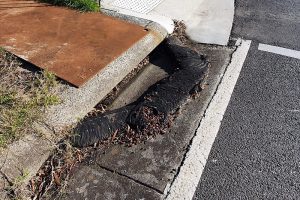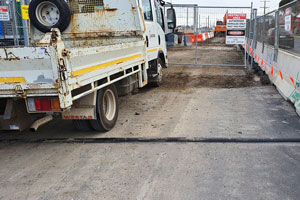
Using Floor Bunding as Sediment Control
This is the story of how we helped Acciona with sediment control on one of Australia’s biggest rail infrastructure projects. Find out why traditional sediment control methods didn’t work and how floor bunding became an unlikely hero.
What is Level Crossing Removal?

Victoria’s Level Crossing Removal Project (LXRP) is one of the largest rail infrastructure projects in the history of the state. The LXRP will remove 85 level crossings across metropolitan Melbourne by 2025. The removal of level rail crossings will improve safety for pedestrians, vehicles and other road users. Other benefits include easing congestion and delays as a result of boom gates along busy roads. This enables more trains, thus increasing transport efficiency and capacity.
The Challenge
Construction firm Acciona was tasked with removing multiple level crossings on the Frankston line in the South-East of Melbourne. The rail line is used by approximately 40,000 rail passengers every weekday. The 11km worksite between Chelsea and Frankston contained 12 entries and exits, each dealing with traffic from heavy vehicles and machinery. To control sediment, silt socks were placed at each entrance, and were subsequently moved out of the way for passing vehicles. The trouble was that with many entries and exits, moving the silt socks was becoming an arduous and time-consuming process.
Silt socks were also being driven over and split, spilling rocks and debris over the road. Cleaning up and replacing broken silt socks was becoming costly. Southern Program Alliance Environmental Advisor, Sam Chitty approached Stratex with the challenge he was facing. Ultimately with some creative thinking, together we were able to collaborate in finding a solution.

The Solution
Bunding is normally used as secondary containment to prevent against large liquid spills. On the LXRP, Stratex heavy duty rubber floor bunding was installed at each site entrance to replace the splitting silt socks. By tweaking how rubber floor bunding was used, we were able provide effective sediment control for the duration of the project. The rubber bunding was secured to the asphalt using M12 x 150mm countersunk screw bolts. This method was chosen due to the heavy traffic requirements, compared with the standard method of Dynabolts and Fulaprene adhesive.
The rubber bunding remained secure and held up well to large trucks and excavators, whilst preventing sediment from leaving the construction site. “The bunding exceeded my expectations and became one less thing to worry about” explained Sam Chitty, “It increased productivity and helped us stay environmentally compliant. I’d consider using it again as sediment control”. Stratex VIC Territory Sales Manager, Nelson Earl said “The rubber bunding performed well, we were pleased that we could help Sam to achieve the outcome he was seeking”.
To learn more about this project, or if you’d like us to help you solve your challenges contact your local Stratex Xpert by calling 1300 991 180 or email [email protected].









